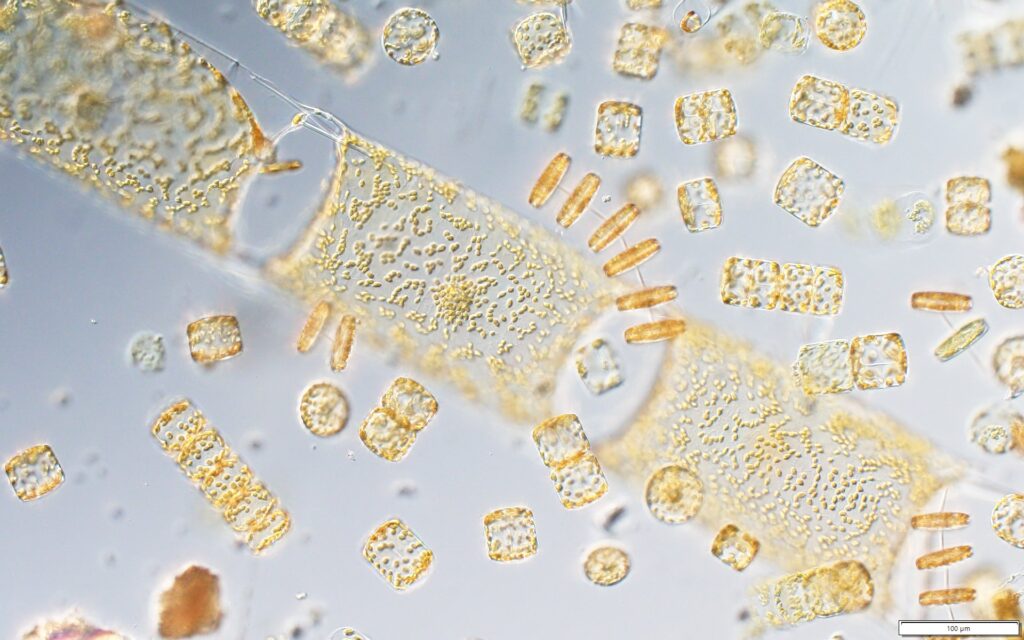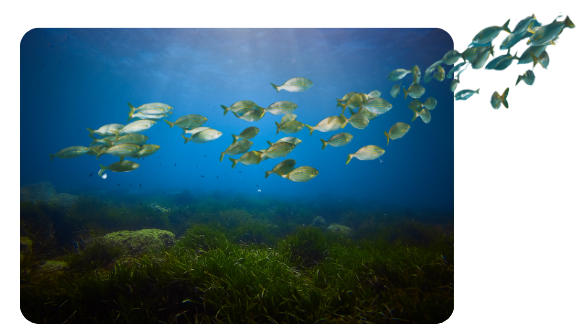Story
The Spring bloom illuminates the Western English Channel
19 May 2025
As the UK enjoys warmer weather and longer days, our scientists are also enjoying seeing the vibrant plankton communities blossom in UK waters through the Spring bloom.
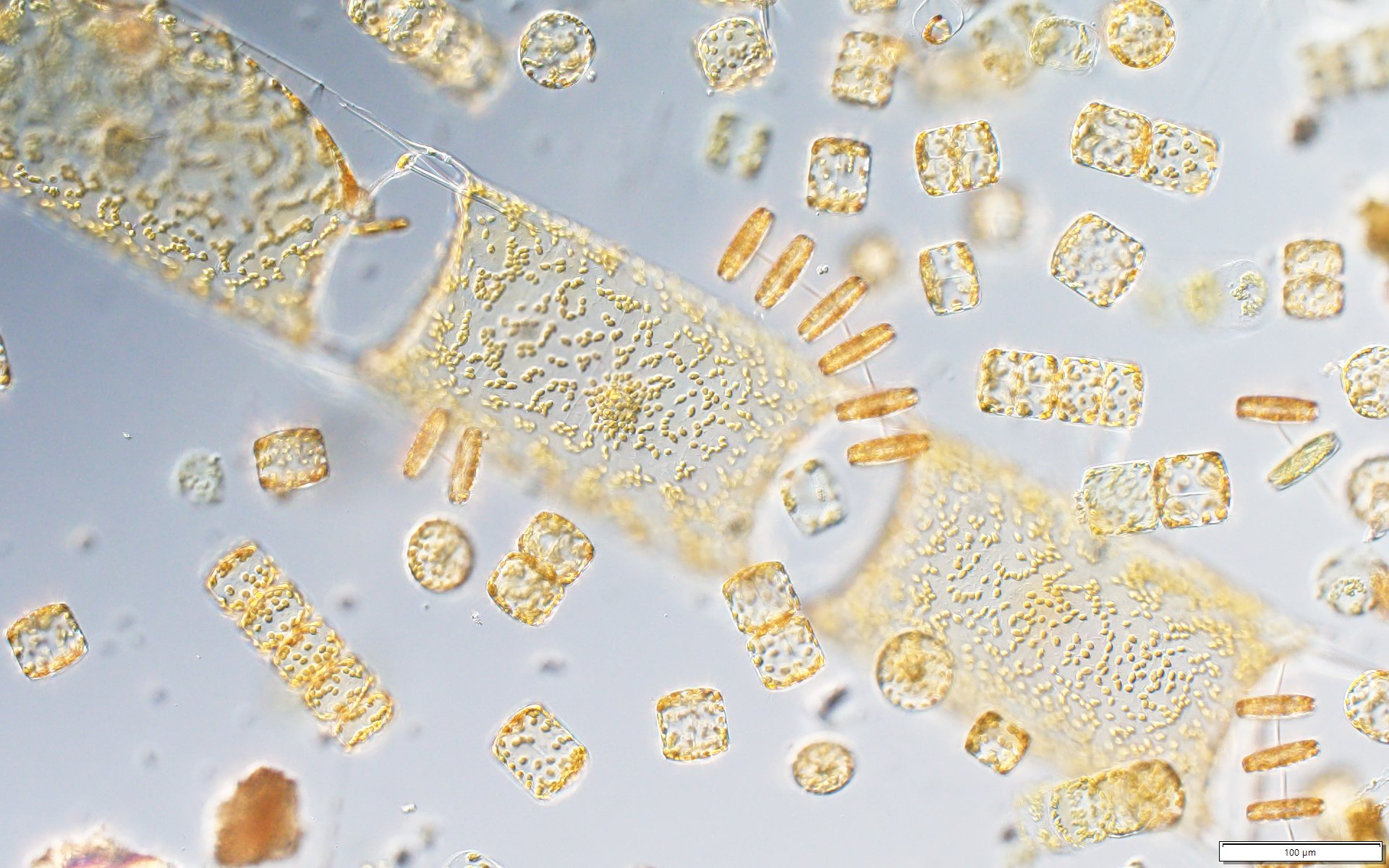
Image caption: Diatoms spring to life under the microscope. Diatoms are single-celled microalgae with a cell wall of silica, and many kinds are planktonic. Some grow as single cells, but many form chains. Some are long and thin, shaped like a canoe (pennate diatoms) while others are cylindrical (centric diatoms, which often have spines). Diatoms are important components of marine ecosystems: removing carbon dioxide from the atmosphere through photosynthesis and making biomass which supports the food web. Scientists estimate 20 – 50% of oxygen on Earth was produced by diatoms. Image credit: Bryony Pearton / Plymouth Marine Laboratory.
What is the Spring bloom?
The annual Spring bloom marks the end of the marine winter, with an increased abundance of microalgae in response to increased light and temperature, as well as a good supply of nutrients created from mixing caused by weather and rainfall run-off from the land, causing a “population explosion’ often referred to as a bloom.
At the laboratory, we take weekly samples at in the Western English Channel to monitor plankton as part of the Western Channel Observatory, the longest marine dataset in the world. The samples are taken at our L4 monitoring site, about six nautical miles south of Plymouth.
Did you know? Data from the Western Channel Observatory is open-access >>
Image caption: The Western Channel Observatory sampling stations map
Microscopic analysis of microalgae samples from the L4 site has been ongoing since 1992, and the Spring bloom is always a delight for our Plankton Ecologists, especially after a long winter.
Bryony Pearton, Phytoplankton Apprentice at the laboratory shared some of the below stunning photos from one of the samples from L4 in May, taken during her weekly microscopic analysis.
Image caption: The microalgal plankton community sampled from L4 in May shows an increase in the species diversity of diatoms, including the oval shaped, chain-forming Thalassiosira spp. and the large rectangular Odontella sinsensis. This possibly indicates the start of the Spring bloom. Image credit: Bryony Pearton / Plymouth Marine Laboratory.
Bryony said:
“This spring has been interesting so far, I’ve been very lucky to see a diverse range of species in the samples already. Recent weeks have seen a wide variety of diatoms, long chains of Cerataulina pelagica and clouds of Thalassiosira subtilis. I look forward to seeing what L4 has in store for us every week, I really enjoy watching the seasons and conditions change via the microscopic analysis of our samples.”
Senior Plankton Ecologist – and Phytoplankton Lead of the WCO – Claire Widdicombe, added:
“Spring months are particularly interesting as the phytoplankton community takes advantage of longer days, warmer temperatures and a plentiful supply of nutrients to grow quickly and bloom, supporting a succession of highly diverse species, especially diatoms. Diatoms are a type of microalgae often referred to as phytoplankton. Phytoplankton use light and nutrients to grow. Other types of microalgae, the mixoplankton, also eat prey and typically bloom later in the season.”
“I also enjoy seeing some of the rarer coccolithophores that occasionally pop up in the samples. Their calcareous plates are not only beautiful and ornate but also play a vital role in marine biogeochemical cycles.”
Dr Peter Miller, Marine Earth Observation Scientist at PML, has also been observing the bloom in the Western English Channel from space, and shared the following images revealing high levels of chlorophyll-a. Higher chlorophyll-a levels directly correlate with a larger microalgal population, indicating increased biomass.
Dr Miller said:
“Here are a pair of 7-day composites, combining Sentinel-3 OLCI ocean colour data from the 27th April to the 3rd May 2025. The first shows a false-coloured view of chlorophyll-a concentration, showing quite high levels close to Plymouth, and moderate further offshore.”
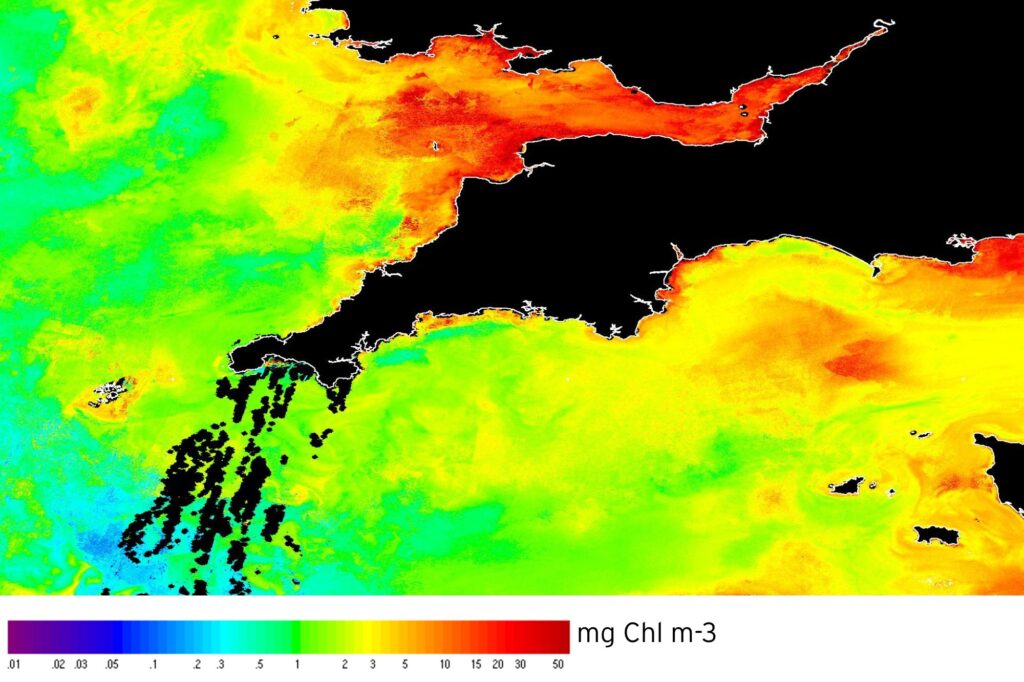
“The next image has been processed using enhanced ocean colour, showing the distinction between the larger darker bloom water (brownish, off southwest coasts) with the bright coccolithophore bloom south of Cornwall, and other colours caused by suspended sediment around Channel Islands and Bristol Channel.”
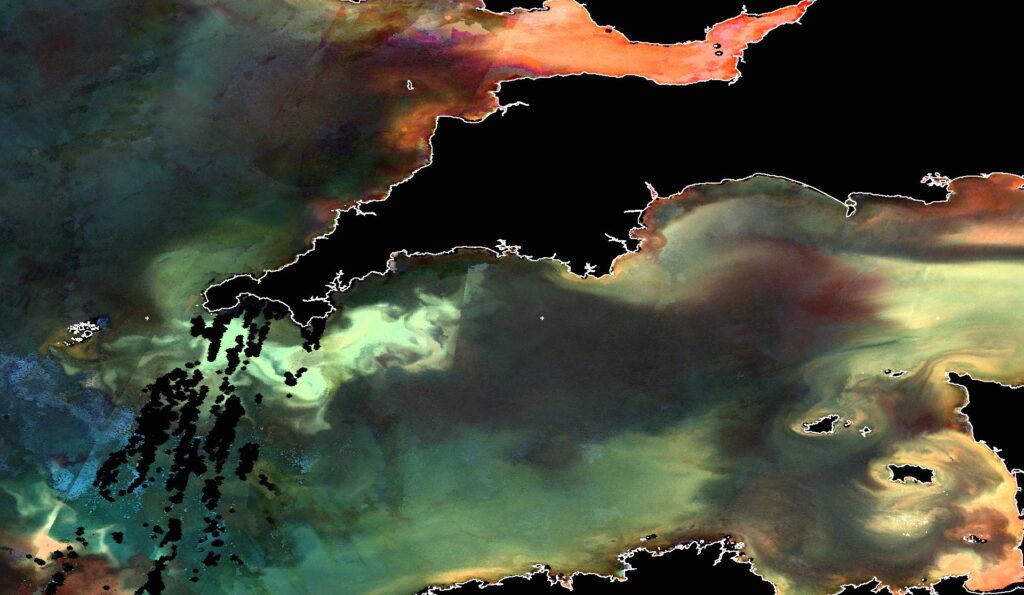
PML’s Earth Observation scientists and Plankton Ecologists will continue to share information with each other over the coming weeks as the bloom develops, plateaus then dies off.
Increasing our understanding of how blooms develop, what biological and chemical processes are occurring and the fate of marine species as the bloom declines, are essential in advancing research relating to marine food-webs, climate change and marine spatial planning.
Stay tuned:
To celebrate the Spring bloom, over the following days we will continue to share ‘all things plankton’ on our website and social media channels!
